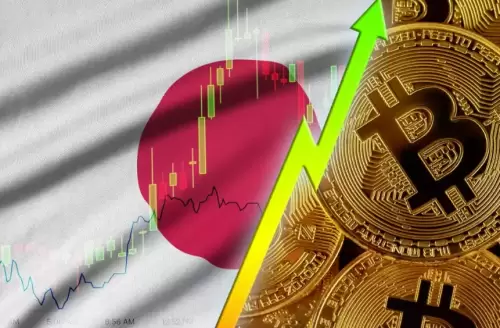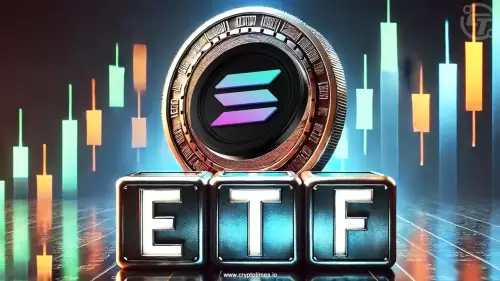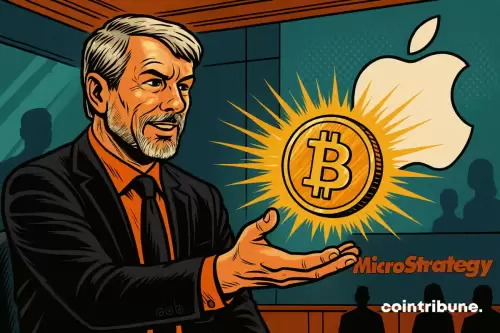 |
|
 |
|
 |
|
 |
|
 |
|
 |
|
 |
|
 |
|
 |
|
 |
|
 |
|
 |
|
 |
|
 |
|
 |
|
暗号通貨のニュース記事
In a Dramatic Twist, Wall Street Has Defied Expectations, Clawing Its Way Back to Its Strongest Weekly Performance Since 2023
2025/05/02 01:11

Wall Street equities surprisingly rallied to their strongest weekly performance of 2023 despite a week marked by volatility, trade tension, and unsettling bond market behavior.
This rebound in equities stands in sharp contrast to the persistent instability across other key indicators, particularly in Treasuries and currency markets. Yet beneath the surface, uncertainty reigns, raising questions about how long this rally can truly last.
Lucas Morran, financial strategist at QuilCapital, examines how this fragile optimism may be masking deeper systemic strains and highlights what investors should prioritize as pressure mounts on policymakers and markets alike.
A Rally That Belies Deeper Market Turmoil
Friday’s stock market reversal caught many traders by surprise. The S&P 500 gained 1.2%, while the Nasdaq 100 advanced 1.3% and the Dow Jones climbed 1%, helping cement a potential end to a volatile week with the strongest equity rally since last year.
However, this recovery comes with caveats: investors are largely reacting to a pause in bond market chaos rather than any true easing of macroeconomic risks.
The 30-year Treasury yield, though slightly down by Friday, remains up by 45 basis points since the previous week, marking one of the most dramatic surges in borrowing costs since the pandemic. Meanwhile, the U.S. dollar hit a six-month low, signaling reduced investor confidence in the greenback’s safe-haven status.
Equity markets may be rising, but they’re moving in opposition to other asset classes—a divergence that hints at systemic stress rather than healthy optimism.
Image Credit: Canva
Trade Wars and Safe-Haven Doubts
Much of the market’s confusion stems from rapidly shifting U.S. trade policies. The latest round of tariffs—quickly imposed and then partially paused—has jolted global sentiment.
China responded by slapping increased tariffs on all U.S. imports, a move that could significantly impact bilateral trade flows and corporate revenues.
This response has had cascading effects. For instance, Tesla (TSLA) halted orders for its U.S.-manufactured Model S and Model X vehicles in China as the tariffs rendered them uncompetitive. Shares of U.S. chipmakers with domestic manufacturing also dived, underlining the tangible consequences of the escalating economic skirmish.
Even market veterans are drawing sobering comparisons. Some strategists warn that U.S. assets are behaving more like those from emerging markets than from a developed economy.
The erosion of the dollar’s strength, combined with the volatility in bond markets, has led some to question whether the U.S. can maintain its traditional role as the world’s financial anchor.
Sentiment Sours as Inflation Fears Rise
While markets wrestled with external pressures, internal data painted a bleak picture of consumer confidence. Surveys released on Friday revealed a sharp drop in consumer sentiment, fueled by a surge in long-term inflation expectations to multi-decade highs. Even before the policy shifts midweek, American households were already feeling the strain.
This erosion in confidence suggests that consumers are increasingly anxious about the future—not just because of headlines, but due to real economic pressures that affect spending, saving, and investing behaviors. For a consumption-driven economy like the U.S., this represents a major risk to continued growth.
Bond Market Panic and China’s Role
The bond market has been ground zero for this week’s financial turbulence. Rising yields on longer-dated Treasuries have unnerved analysts and investors alike. Theories are now circulating about China possibly selling U.S. debt, though evidence remains circumstantial. Still, the prospect of such action has rekindled old fears about geopolitical tensions translating into financial weaponry.
Adding to concerns, analysts are worried about a potential “kerfuffle” in the Treasury market—an unusual term used by a top bank executive to describe what might be a liquidity crunch or regulatory dislocation. Many now believe the Federal Reserve will be forced to intervene, but likely only after signs of more systemic stress emerge.
Barclays analysts echoed these concerns, noting that until Treasuries return to normal behavior, other risk assets such as equities are likely to remain fragile and prone to sharp swings.
A World Watching U.S. Policy Shifts Closely
The global ripple effects are already being felt. As the MSCI World Index rose 0.9%, international investors found themselves trying to navigate an increasingly chaotic landscape. While some saw opportunities in undervalued assets, many are adopting a defensive stance, moving capital into short-duration bonds or away from the U.S. altogether.
Two-year Treasuries are now being viewed as safer bets amid the uncertainty.
Strategists have recommended short positions on equities until the S&P 500 hits 4,800 points while advocating for long bets on shorter-dated debt instruments that carry less risk in turbulent environments.
Conclusion: Resilience or Reversal Ahead?
The sharp rebound in equities may offer a brief moment of relief, but it does little
免責事項:info@kdj.com
提供される情報は取引に関するアドバイスではありません。 kdj.com は、この記事で提供される情報に基づいて行われた投資に対して一切の責任を負いません。暗号通貨は変動性が高いため、十分な調査を行った上で慎重に投資することを強くお勧めします。
このウェブサイトで使用されているコンテンツが著作権を侵害していると思われる場合は、直ちに当社 (info@kdj.com) までご連絡ください。速やかに削除させていただきます。
-

-

-

- UniswapのUni Priceは牽引力を獲得します
- 2025-06-14 15:40:12
- 4.50ドルのレベルを超えるベースを形成した後、UNI価格は米ドルに対して新たな増加を開始しました。
-

-

-

-

-

-































































